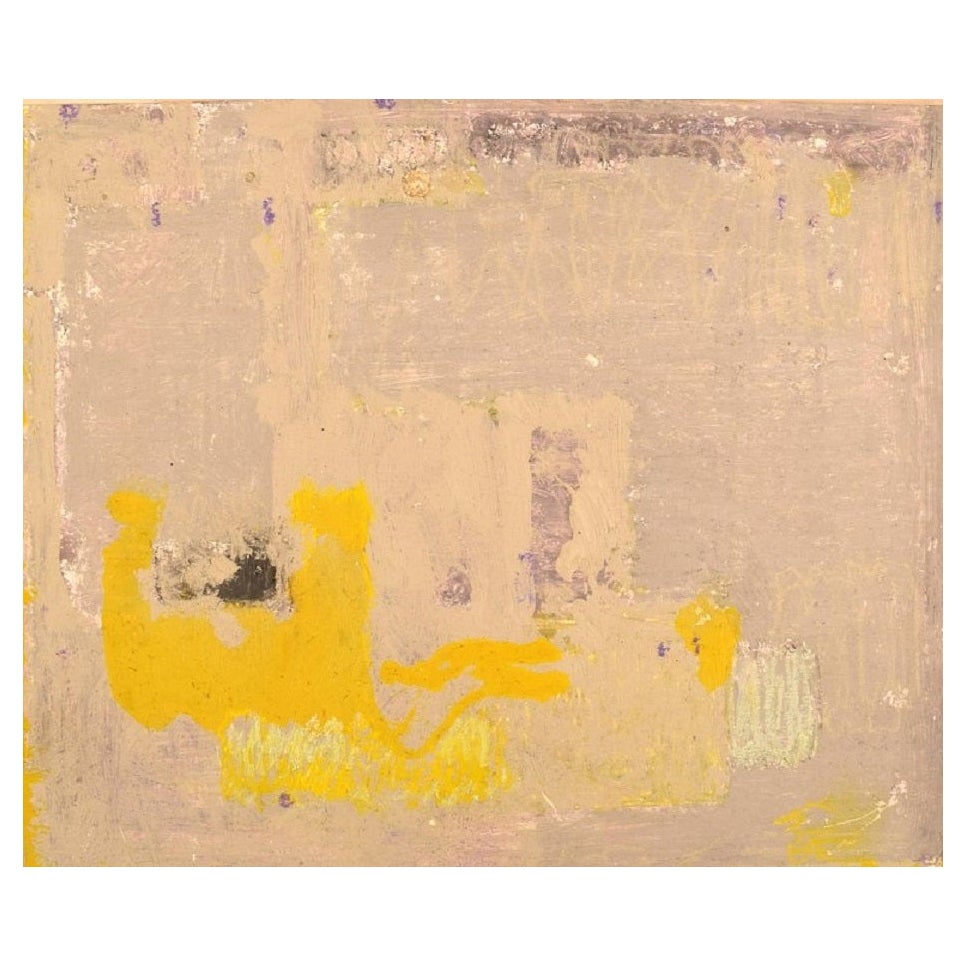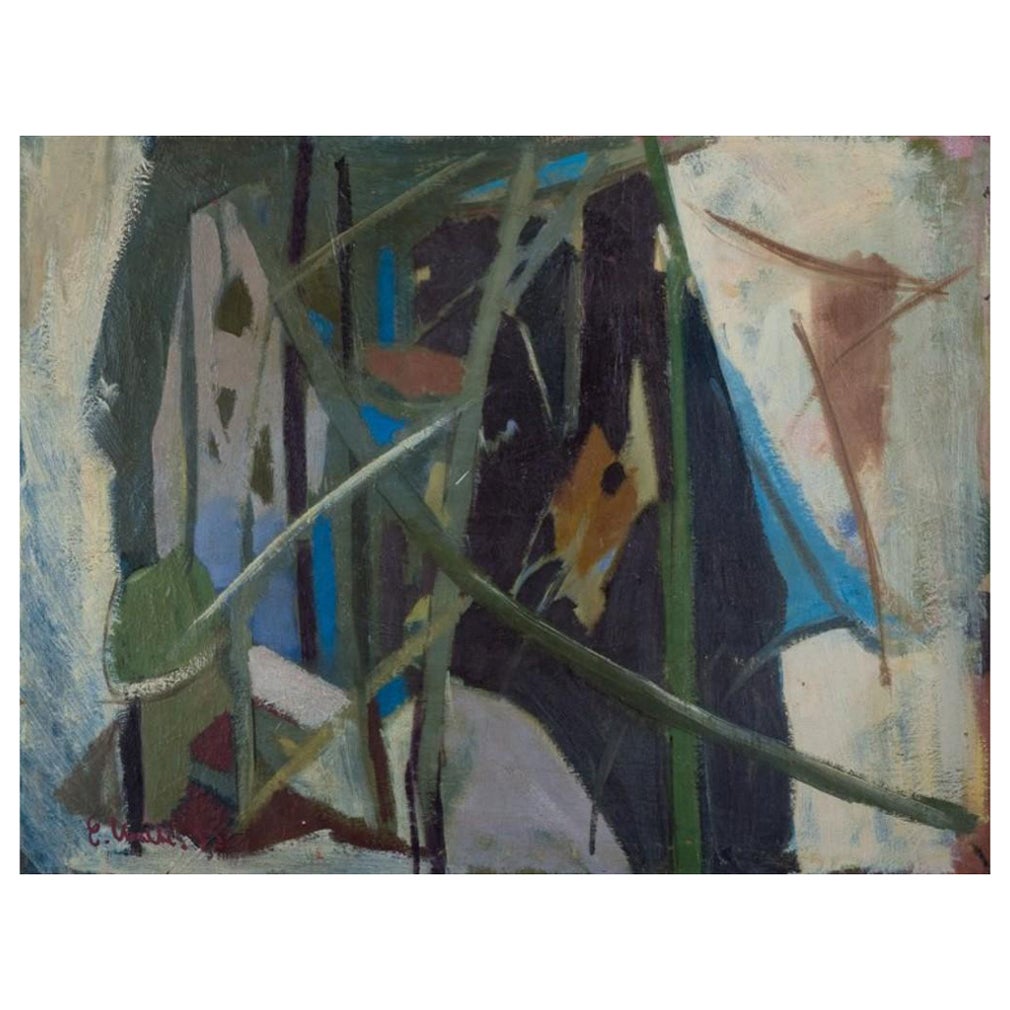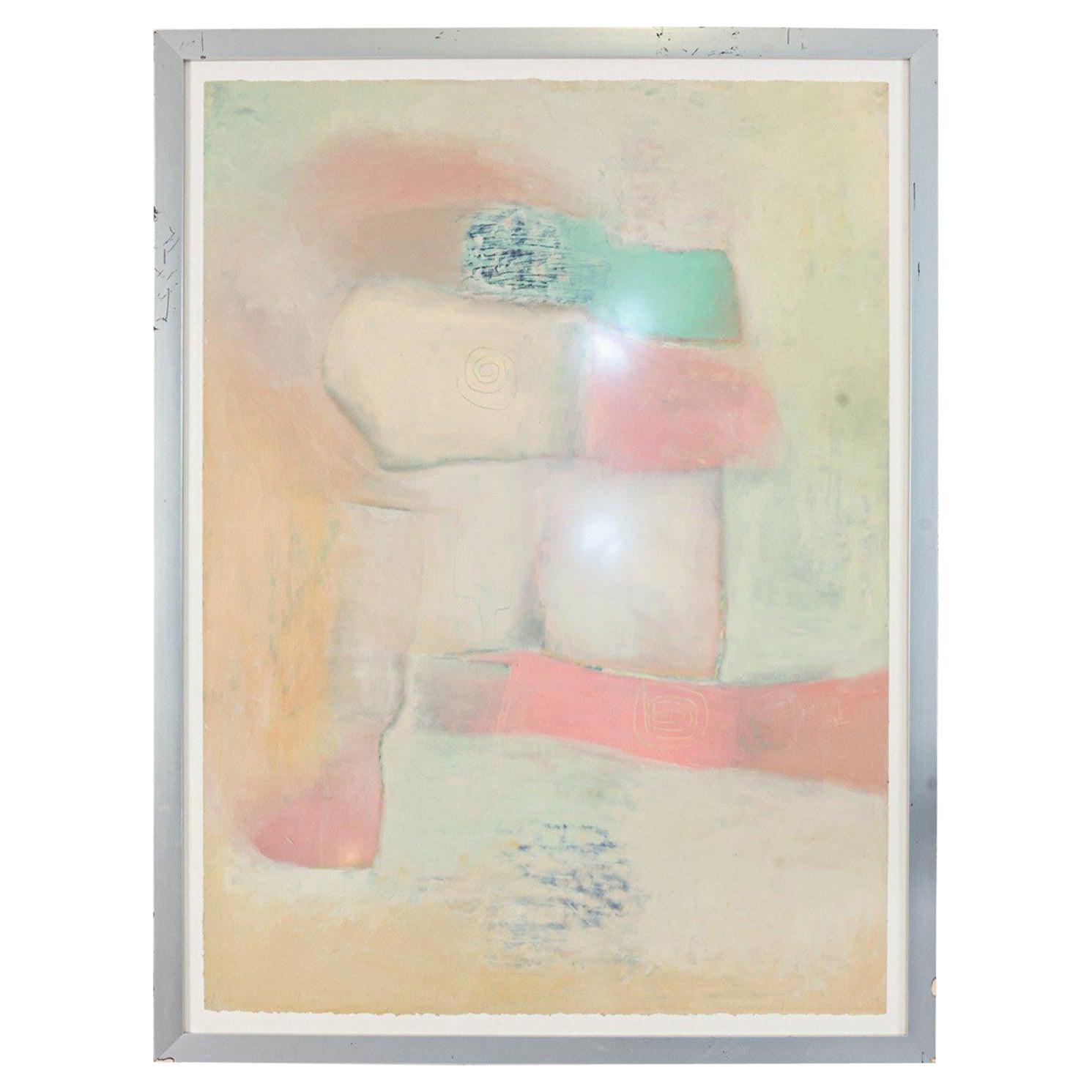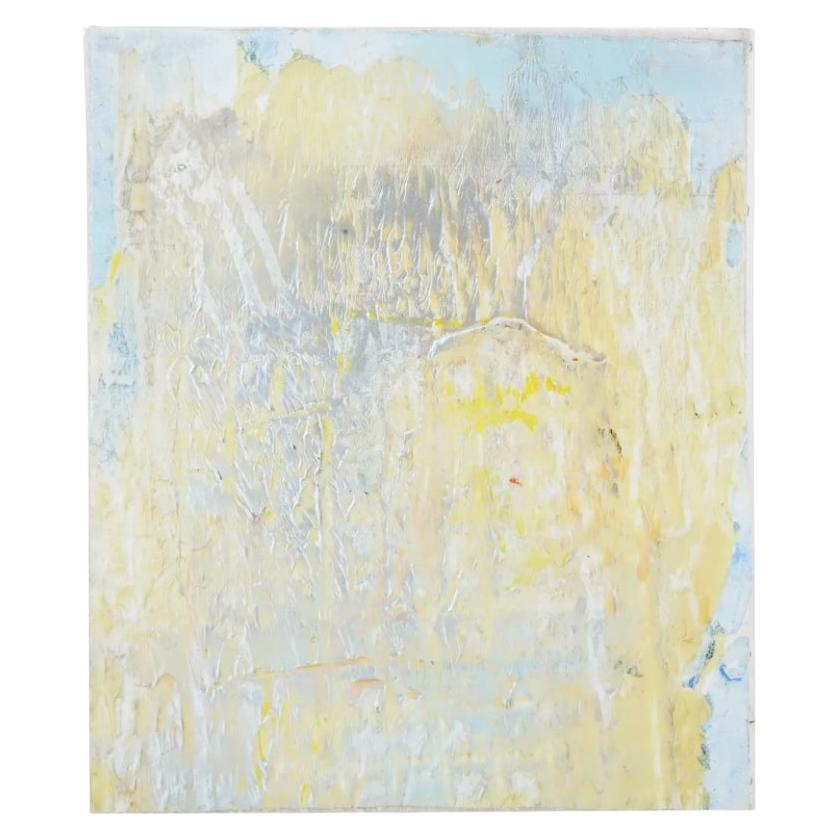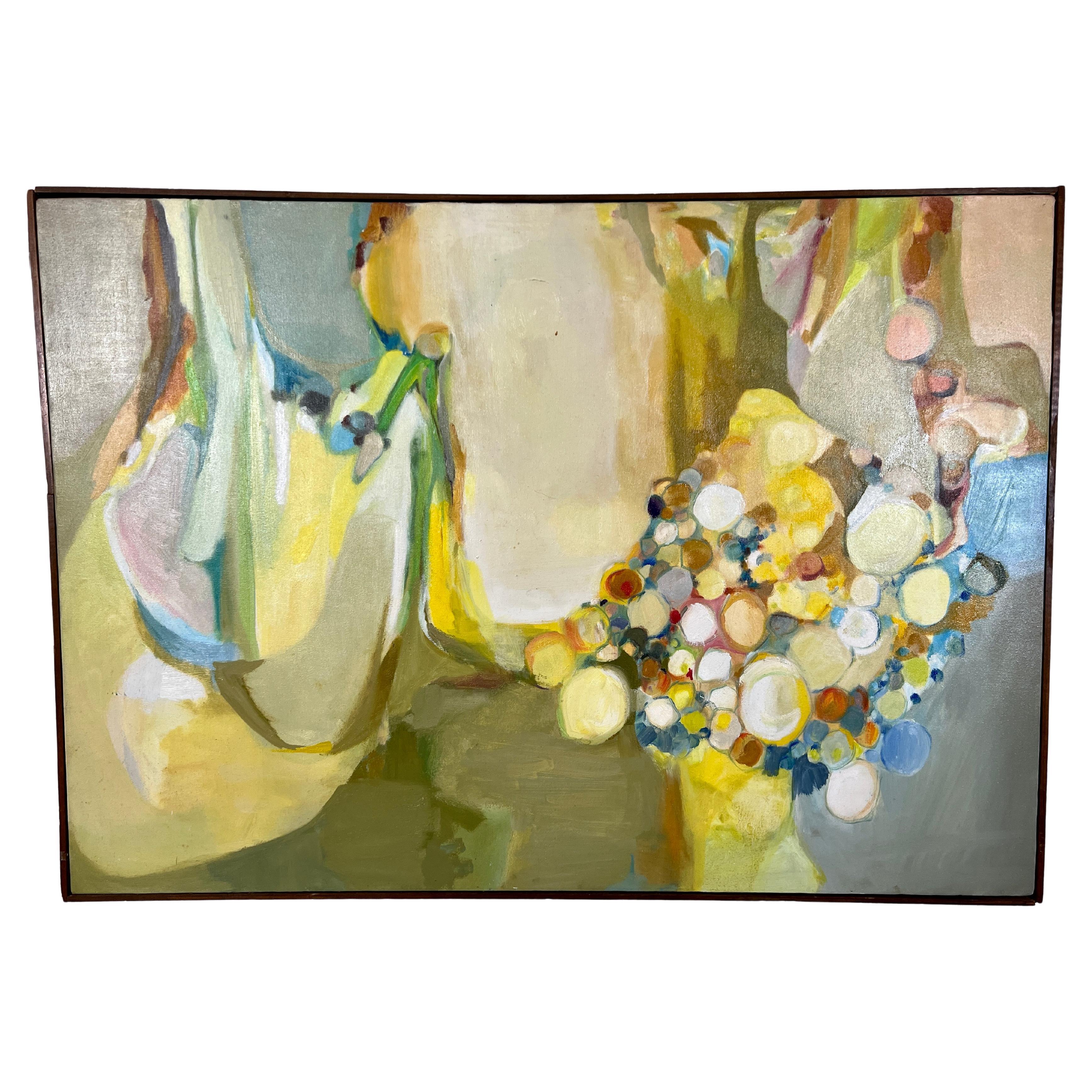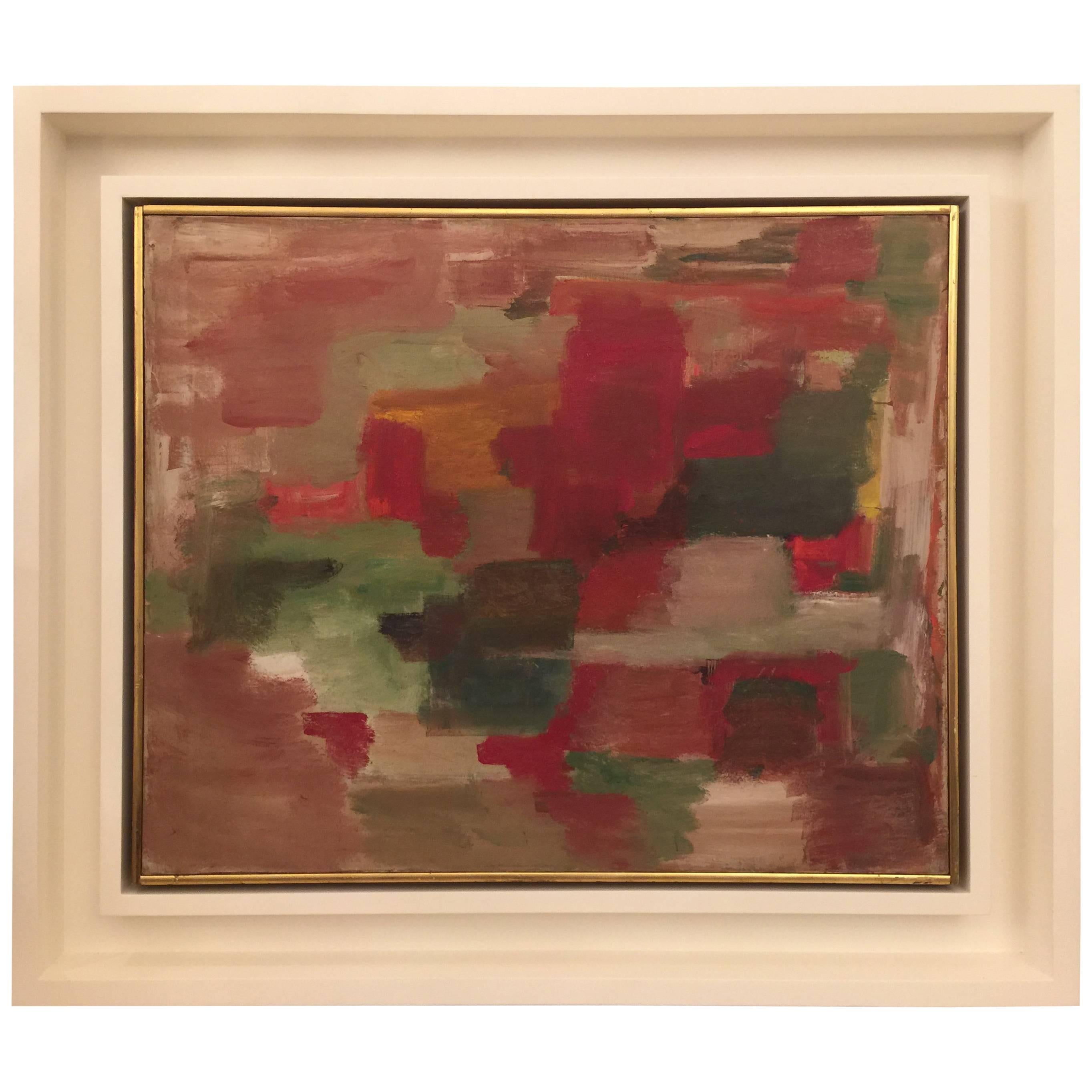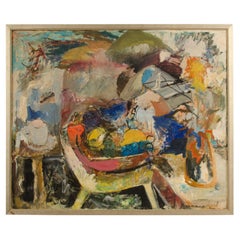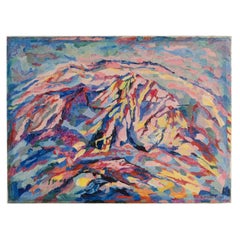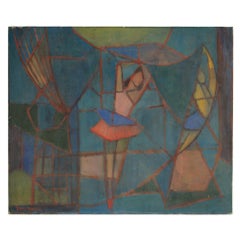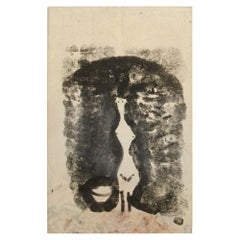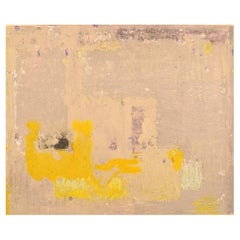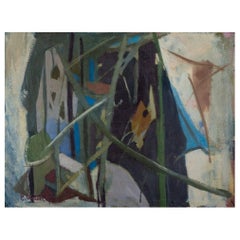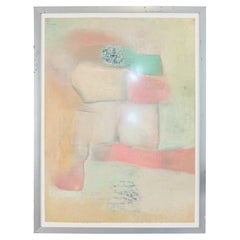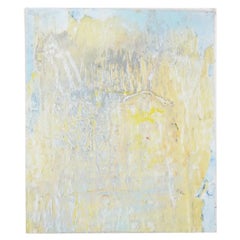Items Similar to Manierre Dawson (American, 1887-1969) Abstract oil painting on canvas
Want more images or videos?
Request additional images or videos from the seller
1 of 7
Manierre Dawson (American, 1887-1969) Abstract oil painting on canvas
$7,995
£6,030.30
€6,965.05
CA$11,201.55
A$12,455.48
CHF 6,520.67
MX$152,145.97
NOK 81,938.60
SEK 77,079.67
DKK 51,993.63
About the Item
Manierre Dawson (American, 1887-1969) An original abstract oil painting on canvas. Signed lower left and dated 1930.
Biography from the Archives of askART -
Chicago-born Manierre Dawson (1887-1969) was a major early American modernist painter — perhaps the Windy City's most progressive spirit. It is generally believed that this civil engineer and self-taught artist achieved a non-objective abstraction with no knowledge of the activities of Kandinsky, whose work Dawson's resembles. He began painting in 1903 or 1904: nature studies that recall Whistler's "nocturnes" (Gedo, 1977). By 1906, he painted figural compositions, such as Figures on Pale Blue, that show the obvious influence of Arthur B. Davies. Aspidistra, from the same year, is a minimalist still-life, painted with great precision. The organic curves of the plant have an Art Nouveau elegance. In contrast, Six Flowers in a Vase, painted in 1908, is more two-dimensional.
The artist stated that after graduating in civil engineering from the Illinois Institute of Technology in 1909, when he began working for Holabird and Roche as an architectural designer, he fell under Cézanne's spell: "The following year, . . . I was seriously involved in making pictures that were 'non-objective abstractions,' working from original themes." (Quoted by Gedo, 1977, n.p.). Prognostic (Milwaukee Art Center), probably Dawson's most famous work, which Gertrude Stein purchased, comes from 1910. Forever in search of stylistic sources, art historians have been struck by the painting's resemblance to what Kandinsky was doing in 1909-1910. Before that time, the avant-garde Russian painter was still working in the Jugendstil-Expressionistic mode. Prognostic, executed in early 1910, apparently pre-dates Kandinsky's famous "improvisations" of the same year, which represent the Russian artist's leap into pure non-objective art. The 1909 "improvisations" are still recognizable as representations of landscape. Susan S. Weininger, in Chicago Modern (2004) adds a possible source for Prognostic: lessons from Arthur Wesley Dow's book Composition (1899), and she quotes from Dawson's notebook: "[he was attempting] "to fix forms by painting or sculpture that have given me an emotion, hoping to find some who reacted as I did to these shapes and colors presented on canvas or in some plastic material. . . . " Furthermore, he stated that Prognostic was one of seven paintings influenced by his engineering and mathematics courses "in the background of coordinates and super-position of differentials. . . ."
In late June of 1910, Dawson made a trip to Europe. There is, unfortunately, no mention in his diary of avant-garde art that he may have seen, however, he did visit Gertrude Stein's residence, where Picasso's 1906 portrait of Stein (Metropolitan Museum of Art) was hanging, along with works by Cézanne, Matisse, and other paintings by Picasso. Surely Matisse's Olive Trees (Metropolitan Museum; Lehman Coll.) would have made an impression on Dawson. Writers assume that Dawson remained unaware of Kandinsky until the Armory Show toured Chicago. The rest of Dawson's story might be called his late period; moreover, he left Chicago in 1914 to settle on a farm in Michigan. Lacking encouragement and occupied with the demands of the farm, Manierre Dawson almost stopped painting. Despite his innovative genius, Dawson "ultimately had little effect on [Chicago's] modernists." (Prince, 1990, p. 61). In 1968 there was a retrospective of Manierre Dawson's works at the Ringling Museum, Sarasota, Florida, and at the Norton Gallery in Palm Beach. Another followed in 1976 in Chicago's Museum of Contemporary Art.
Sources:
Gedo, Mary Mathews. Manierre Dawson (1887-1969). A Retrospective Exhibition of Painting. Chicago: Museum of Contemporary Art, 1976-77; Sparks, Esther. "A Biographical Dictionary of Chicago Artists 1808-1945." Diss., Northwestern University, 1971, p. 354; Davidson, Abraham. Early American Modernist Painting 1910-1935. New York: Harper and Row, 1981, pp. 262-265; Bessire, Mark H. and Mary Jo Peer. Manierre Dawson. Early Abstractionist. New York: Whitney Museum of American Art, 1988; The Old Guard and the Avant-Garde: Modernism in Chicago, 1910-1940. Ed. Sue Ann Prince. Chicago: University of Chicago Press, 1990, pp. 60-61; Ploog, Randy J., "The First American Abstractionist: Manierre Dawson and His Sources," in Manierre Dawson: American Pioneer of Abstract Art. New York: Hollis Taggart Galleries, 1999; Chicago Modern 1893-1945: Pursuit of the New. Ed. Elizabeth Kennedy. Chicago: University of Chicago Press, 2004, cat. no. 27.
Submitted by Michael Preston Worley, Ph.D.
Biography from the Archives of askART
A Chicago painter and sculptor and "one of the earliest American modernists to explore non-objective abstraction" (Falk 850), Manierre Dawson's artwork was influenced by his engineering background. He first studied Civil Engineering at the Armour Institute of Technology (now the Illinois Institute of Technology) in order to satisfy the goal of his parents who wanted him to pursue a traditional profession. In 1909 he earned the B.S. degree from that institution, and then joined the firm of Holabird and Roche as an architectural draftsman.
By the next year, he was painting in a Cubist style as evidenced by seven paintings including Prognostic, 1910, an oil on panel in the collection of the Milwaukee Art Museum. Until recently, some academics studying Dawson attributed later dates to these works with the assumption he had added the early dates to appear a 'pioneer' of avant-garde painting. However, scholar Randy Ploog found evidence that Dawson was in reality a 'pioneer' as he was painting in abstract styles immediately after his graduation from engineering school. This evidence, which makes Dawson the earliest modernist of note in the Chicago area and likely beyond, came from work of Dawson's known to have been done when he was with Holabird and Roche. These creations showed that he had an original approach, different from what was going on in Europe where he had not yet visited, and much influenced by his own predilection for mathematical formulas and interest in spatial relationships.
At that time, he wrote in his journal that his art was intended to "express spiritual truth through pure form" and was "an attempt to fix forms by painting or sculpture that have given me an emotion, hoping to find some who reacted as I did to these shapes and colors presented on canvas or in some plastic material". (Ploog 66). He went on to say that this work plus six others he did at that time reflected in their "coordinates and super-position of differentials" the influences of his engineering and mathematical background
In 1910, Dawson traveled to Paris for the first time, and there became exposed to the Fauvism of Cezanne, the Cubism of Picasso, and the 'pushing of boundaries' of other modernist artists. He became acquainted with Gertrude Stein, avant-garde art collector whose salons, with her brother, Leo, were famous as gatherings for writers and painters and others associated with leading-edge fine art expression. Dawson's first sale was to Stein, who recognized his talent and wanted to encourage him. She paid him 200 francs. While in Europe, he also traveled to Italy and Germany.
Returning to Chicago in late 1910, Dawson became friends with Walter Pach (1883-1958), prominent artist and author whose influence led to Dawson's non-objective painting Wharf Under Mountain being entered in the 1913 Armory Show exhibition when it was hung in Chicago. At that time Dawson also took up sculpture and abandoned pursuits as an architect. However, shortly after, he gave up thoughts of having an art career because he was highly discouraged by the lack of appreciation of modernist art and by his own inability to support himself and his family through the sale of artwork.
In 1914, he moved to Ludington, Michigan where for many years he was a fruit farmer.
Sources include:
Elizabeth Kennedy, editor, Chicago Modern 1893-1945 Pursuit of the New, p. 106
Randy J. Ploog, Manierre Dawson: American Pioneeer of Abstract Art, pp. 62-64 (Hollis Taggart Galleries)
Peter Falk, Who Was Who in American Art, p. 850
Biography from Hollis Taggart Galleries
Photo of Manierre Dawson
Born into a cultured family in Chicago, Manierre Dawson was primarily self-taught, although he trained as an architect. By 1908, he had developed an original style of rigorously simplified shapes. Not long after, Dawson produced a series of completely abstract paintings that featured parabolas, hyperbolas, and circles scattered across the picture surface. They were among the first non-objective works produced by an American, preceding similar work by Arthur Dove by two years.
Returning from a European tour in 1910, Dawson resettled in Chicago, where he abandoned non-objectivity and experimented with styles as he tried to assimilate lessons of the Old Masters as well as the avant-garde. He executed tightly integrated still lifes and fragmented, Cubist-influenced pieces showing the human body in motion, paralleling the work of Marcel Duchamp and the Italian Futurists. When the Armory Show came to Chicago in 1913, its organizer, Walter Pach, was so impressed by Dawson's paintings that he included one of them in the show.
On the verge of recognition, Dawson participated in two important exhibitions: "The Fourteen," organized by Davies and Pach, which presented work by fourteen modern American artists; and "Painting and Sculpture in the Modern Spirit," a one-man exhibition organized by the Milwaukee Art Center. The same year he bought a fruit orchard in Ludmington, Michigan. Thereafter, the demands of farming limited Dawson's artistic output to six to twelve paintings a year. He returned his focus to art after 1940 and began making sculpture with laminated particleboard and other innovative materials. Throughout the 1940s and 1950s, Dawson went on to create an impressive body of sculpture.
Dawson died in 1969. Today his work is represented in numerous public collections, notably, the Whitney Museum of American Art, the Brooklyn Museum, the Art Institute of Chicago, and the Smithsonian American Art Museum.
© Copyright 2007 Hollis Taggart Galleries
- Dimensions:Height: 16 in (40.64 cm)Width: 12.25 in (31.12 cm)Depth: 1 in (2.54 cm)
- Materials and Techniques:
- Place of Origin:
- Period:
- Date of Manufacture:1930
- Condition:Unframed.
- Seller Location:Philadelphia, PA
- Reference Number:Seller: 25461stDibs: LU5630243348762
About the Seller
4.9
Platinum Seller
Premium sellers with a 4.7+ rating and 24-hour response times
Established in 2020
1stDibs seller since 2021
413 sales on 1stDibs
Typical response time: 1 hour
- ShippingRetrieving quote...Shipping from: Philadelphia, PA
- Return Policy
Authenticity Guarantee
In the unlikely event there’s an issue with an item’s authenticity, contact us within 1 year for a full refund. DetailsMoney-Back Guarantee
If your item is not as described, is damaged in transit, or does not arrive, contact us within 7 days for a full refund. Details24-Hour Cancellation
You have a 24-hour grace period in which to reconsider your purchase, with no questions asked.Vetted Professional Sellers
Our world-class sellers must adhere to strict standards for service and quality, maintaining the integrity of our listings.Price-Match Guarantee
If you find that a seller listed the same item for a lower price elsewhere, we’ll match it.Trusted Global Delivery
Our best-in-class carrier network provides specialized shipping options worldwide, including custom delivery.More From This Seller
View AllAbstract interior scene by Rose Graubart Ignatow (American, 20th C.)
Located in Philadelphia, PA
Abstract Still life of bowl of fruit on table
- Oil on Canvas , signed lower right "Rose Graubart"
- Framed dimensions: 31.25 in x 26.25 in.
Category
Late 20th Century Paintings
Materials
Canvas
Elisabeth Merlicek 'Austrian, 1911-1988', "Kalkberg"
Located in Philadelphia, PA
"Kalkberg", mountain covered in snow
- Oil on canvas, signed lower right
- Unframed.
Category
Mid-20th Century Paintings
Materials
Paint
Sidnee Livingston (American, b. 1905 - d. 1995) "Abstract Ballerina" painting.
Located in Philadelphia, PA
"Abstract Ballerina"
- Ballerina in abstract environment
- Oil on canvas, signed lower right
- Unframed.
Category
Mid-20th Century Paintings
Materials
Canvas
Newton Haydn Stubbing (British, b. 1921 - d. 1983) "Untitled" Painting
Located in Philadelphia, PA
"Untitled", black handprints in the of a shape nude woman with a bowl.
- Oil on canvas, estate stamp on back of painting frame dated 1960
- Artist also known as Tony H. Stubbing
-...
Category
Mid-20th Century Paintings
Materials
Canvas
Ernest Yarrow-Jones (British, b. 1872 - d. 1951) "Confetti" Painting.
Located in Philadelphia, PA
Ernest Yarrow-Jones (British, b. 1872 - d. 1951)
- Oil on canvas, signed lower left
- Abstract Confetti, yellow, green, blue
Measures: 13.25" x ...
Category
Mid-20th Century Paintings
Materials
Canvas
Ernest Yarrow-Jones (British , b. 1872 - d. 1951) "Le Crepuscule" painting.
Located in Philadelphia, PA
"Le Crepuscule"-
Depicting an abstract face of an owl
- Oil on Canvas , signed lower left
- Unframed
Category
Antique Early 1900s Paintings
Materials
Canvas
You May Also Like
Unknown European Artist, Oil on Board, Abstract Composition, Late 20th C
Located in København, Copenhagen
Unknown European artist. Oil on board. Abstract composition.
Late 20th century.
The board measures: 30 x 25 cm.
The frame measures: 1 cm.
In excellent condition.
Category
Late 20th Century Unknown Paintings
Materials
Other
Swedish artist. Oil on canvas. Abstract composition. 1955
Located in København, Copenhagen
Swedish artist, oil on canvas. Abstract composition. Colouristic palette.
In excellent condition with minimal wear.
Indistinctly signed and dated '55.
Visible dimensions: 67.5 cm x 5...
Category
Vintage 1950s Swedish Modern Paintings
Materials
Canvas
American Post-War Abstract Oil Painting
Located in Queens, NY
American Post War design abstract art, oil painting of pink, green, orange and beige shapes in a silver frame.
Category
20th Century American Modern Paintings
Materials
Silver
Mid Century American Abstract Acrylic Painting
Located in Long Island City, NY
Acrylic on canvas painting. American, mid-20th century. Abstract composition in grey, blue, and yellow colors. Impasto technique. Unsigned. Collectible Modernist Fine Art And Wall De...
Category
Mid-20th Century North American Paintings
Materials
Paint
Abstract Oil on Canvas
Located in Denton, TX
Vintage festive abstract oil on canvas with a simple lathe frame bu Barbara Tuch.
Category
Mid-20th Century North American Mid-Century Modern Paintings
Materials
Canvas, Wood, Paint
$1,200
Havers Abstract/Cubist Oil Painting
Located in North Miami, FL
Custom framed cubist/ abstract painting by Havers. circa 1960's This amazing piece has vivid coloring and rich texture. Professional framing selected by Gustavo Olivieri Antiques...
Category
Vintage 1960s Dutch Mid-Century Modern Paintings
Materials
Canvas, Wood
More Ways To Browse
Arthur Armour
Olive Press
Antique Olive Press
Peter Norton
Mary Armour
Brass Goblets
Breakfront China Cabinet
Burma Lacquerware
Burmese Lacquerware
Cameo Glass Bowl
Carved Stands Chinese Round
Cash Drawer
Cast Iron Antique Bells
Ceramic Wine Jar
Ceremonial Cup
Chest On Stand 17th Century
Chest On Wheels
Chinese Jade Tree
